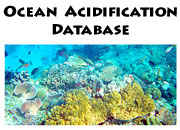| Tweet | Follow @co2science |
Paper Reviewed
Thyrring, J., Rysgaard, S., Blicher, M.E. and Sejr, M.K. 2015. Metabolic cold adaptation and aerobic performance of blue mussels (Mytilus edulis) along a temperature gradient into the High Arctic region. Marine Biology 162: 235-243.
In establishing a backdrop for their newest study of the subject, Thyrring et al. (2015) write that "the intertidal distribution of blue mussels has shifted in a poleward direction, with the southern edge contracted by an estimated 350 km since 1950 due to high temperature mortality," citing Jones et al. (2010). And they say that such findings "have led to the hypothesis of metabolic cold adaptation and evolutionary temperature adaptation," citing the earlier studies of Krogh (1916), Holeton (1974), Addo-Bediako et al. (2002) and Clarke (2003).
Curious to learn more about the subject, the four researchers -- hailing from Canada, Denmark and Greenland -- tested the aerobic performances of blue mussels (M. edulis) from three different populations and quantified their short-term metabolic responses to increased water temperatures, providing thereby what they describe as "one of the first insights into the performance, adaptability and capability of a semi-sessile species, which has expanded to and inhabited the High Arctic region." And what did they thereby learn?
Thyrring et al. say their study (1) "provides evidence of significant metabolic adaptation to temperature between populations of M. edulis along a latitudinal gradient," that (2) "the temperate, the Subarctic and the High Arctic populations displayed constant metabolic activity over a wide temperature range," that (3) "the upper thermal limit was slightly higher for the temperate population (25°C), compared to that of the High Arctic and Subarctic populations (21°C)," that (4) "for all three populations, the absolute aerobic scope declined at temperatures above 14°C," that (5) "at low temperatures (-1 to 1°C), metabolic rates increased with latitude, suggesting metabolic adaptation to low temperatures in Arctic M. edulis," and, most importantly, that (6) "low water temperature per se does not constrain the survival and distribution of this species in the Arctic region."
References
Addo-Bediako, A., Chown, S.L. and Gaston, K.J. 2002. Metabolic cold adaptation in insects: a large-scale perspective. Functional Ecology 16: 332-338.
Clarke, A. 2003. Costs and consequences of evolutionary temperature adaptation. Trends in Ecology and Evolution 18: 573-581.
Holeton, G.F. 1974. Metabolic cold adaptation of polar fish - fact of artifact. Physiological Zoology 47: 137-152.
Jones, S.J., Lima, F.P. and Wethey, D.S. 2010. Rising environmental temperatures and biogeography: poleward range contraction of the blue mussel, Mytilus edulis L., in the western Atlantic. Journal of Biogeography 37: 2243-2259.
Krogh, A. 1916. The Respiratory Exchange of Animals and Man. Longman, London, UK, p. 190.
Posted 7 May 2015



